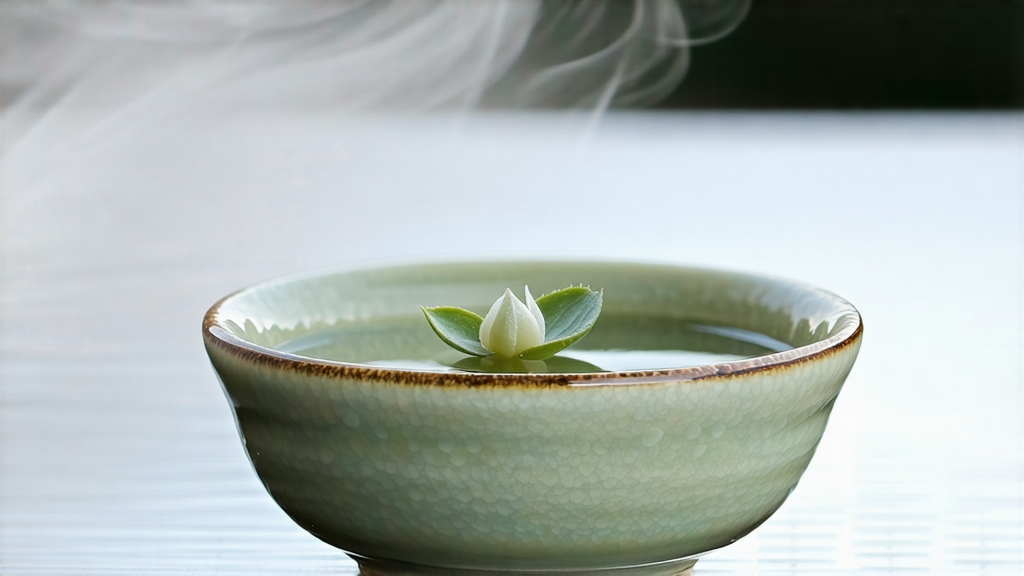
White Hair Silver Needle—Bai Hao Yin Zhen in Chinese—is the quiet aristocrat of the tea world. To the uninitiated it looks like a handful of slender twigs, yet once hot water meets the down-covered buds the liquor turns into liquid moonlight, releasing a perfume that Chinese poets once compared to “the breath of a hidden orchid.” Internationally it is marketed simply as “Silver Needle,” but the original name carries a richer resonance: the “white hairs” are the tiny cellulose filaments that cloak each unopened leaf, while “needle” refers to the bud’s straight, spear-like shape. In the pantheon of white teas it stands at the apex, picked only for a few spring mornings, never rolled, never roasted, only allowed to wither and dry. The result is the least processed—and some argue the most subtle—of all China’s six tea families.
History: From Imperial Tribute to Global Muse
The first verifiable record of white tea appears in the Song dynasty (960-1279) treatise Da Guan Cha Lun, where Emperor Huizong praises “white buds of the first spring” sent from Fujian. Those buds were probably compressed into cakes along with spices, a fashion that vanished when loose-leaf brewing eclipsed cake tea during the Ming. The modern form of Silver Needle emerged in the 1790s when merchants in Fuding county discovered that single buds, simply sun-withered, retained an astonishing sweetness. By the late Qing the tea rode clipper ships to Europe, reputedly winning a gold medal at the 1915 Panama-Pacific Exposition in San Francisco. In the 21st century it has become the darling of specialty cafés from Melbourne to Montreal, praised both for its antioxidant cachet and for a flavor that sommeliers liken to white Burgundy.
Terroir and Cultivar: Why Fuding Tastes Like Fuding
Authentic Silver Needle is produced in two adjacent counties on Fujian’s northeastern coast: Fuding and Zhenghe. The region’s hallmark is a red-yellow lateritic soil rich in iron and quartz, flushed by a subtropical maritime climate—mild winters, fog-cooled springs, and an annual rainfall of 1,800 mm. The permitted cultivars are Fuding Da Bai (“Big White”) and the slightly heartier Zhenghe Da Bai. Da Bai bushes sprout unusually fat buds, often 2.5–3 cm long, packed with amino acids that translate into savory sweetness. Because the bushes are slow to awaken, harvest does not begin until the Qingming festival (early April), when daytime temperatures hover around 18 °C—ideal for slow withering. Attempts to transplant Da Bai to Yunnan or Sri Lanka have produced paler aromatics, proving that the cultivar and its native microbes are inseparable.
Plucking: One Bud, No Leaf, No Compromise
Standards are draconian. Only the unopened bud—the pekoe—is picked, always before noon while dew still sheathes the hairs. Experienced pluckers use a diagonal snap that leaves the stem base intact, preventing oxidation “bleed” at the break. A full kilogram of finished tea requires roughly 30,000 buds, all plucked within a seven-day window. Rain-damaged buds are discarded, as are any showing purple tint (a sign of anthocyanin that turns the infusion astringent). The pluckers themselves work in pairs, one clipping, the other collecting buds on a silk-lined bamboo tray so that the hairs remain unbruised.
Withering: The Art of Losing Moisture Without Losing Soul
Unlike green tea, which kills enzymes with heat, white tea invites enzymes to linger. The buds are spread one layer deep on bamboo racks called shai qing and left in a sun-dappled, breeze-ventilated corridor for 36–48 hours. Ambient humidity is kept at 65–70 % so that moisture exits in a slow gradient; too fast and the bud wrinkles, too slow and it blackens. Masters gauge progress by touch—when a bud bends but does not snap, and when the stem base feels like cured leather, the tea is ready. On the final afternoon the racks may be wheeled into soft sunlight for 20 minutes, a step known as ti xiang (“lifting the fragrance”) that caramelizes trace sugars and fixes the silvery